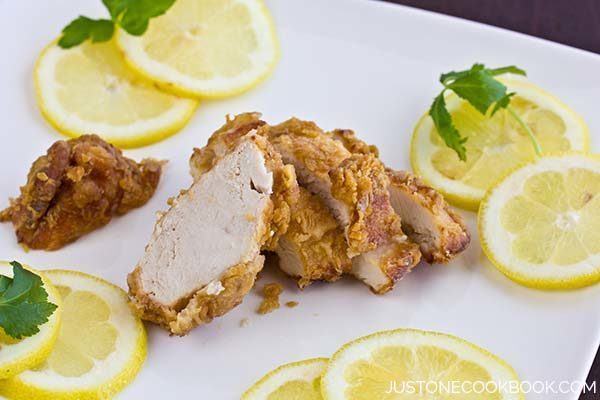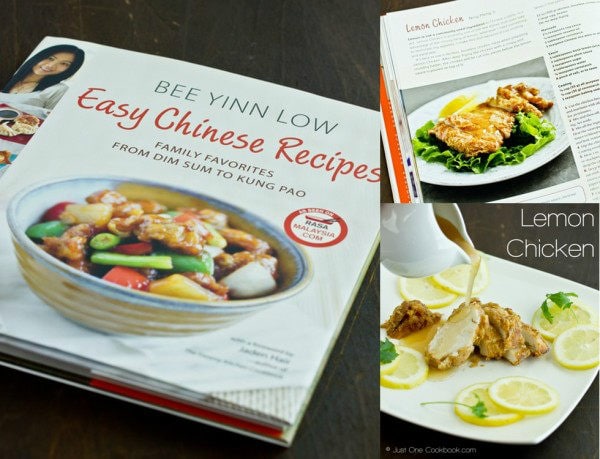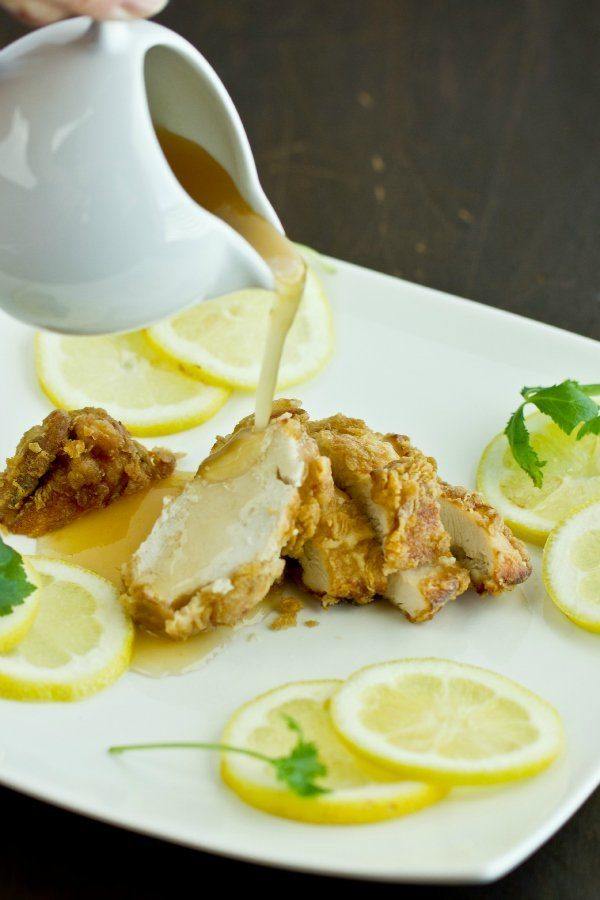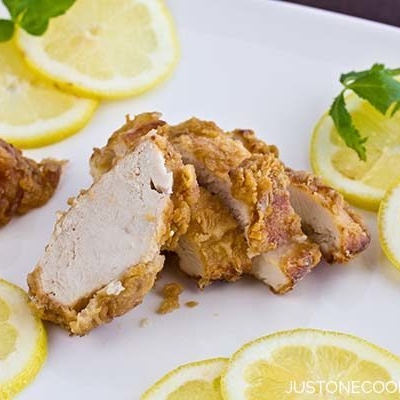
When Tuttle Publishing asked me if I would like to review Bee Yinn Low’s first cookbook last month (Bee is the author of the popular Asian recipe website Rasa Malaysia.com), I was thrilled and accepted immediately because this was the cookbook that I was eyeing on to get my own copy. The best part was I didn’t have to wait until it’s officially released (September 10, 2011)!

I had several reasons why I was looking forward to this cookbook. First of all, I have always wanted to cook delicious Chinese food for my husband. Most of you probably know that my husband is Chinese (precisely Taiwanese American), and I know how to cook a few “Japanized” Chinese dishes such as Mapo Tofu, green pepper pork, and eggplant with garlic sauce. His feedback is my Chinese food is good, but they definitely do not taste authentic. It’s like well, he’s probably right because I prepared all the Chinese dishes based on Chinese cookbook written by Japanese so flavors are for Japanese people. I also have two young children who eat mostly Japanese food and I really want them to better understand both of our cultures. So when I saw Bee’s book title “Easy Chinese Cooking“, I knew that was meant for me.
When I first received the cookbook, I couldn’t wait to try a new recipe and started to look for something for my family. I flipped through the entire book, scanning for pictures and words that caught my attention. Then I read the biography about Bee because I wanted to know more about her. Finally I spent more time looking each and every recipe from the beginning to the end.
Needless to say I was very impressed. Every page of Bee’s book has beautiful pictures and detailed description of the recipe. The book also has basic cooking techniques and tips including how to prepare meat, how to stir-fry perfectly, and more. It also covers Chinese ingredients and condiments over several pages and this will be a tremendous help to build my Chinese pantry. This book has full information without wasting any pages, and it’s ½ inch thick!
Without a doubt, I’ll be cooking more Chinese dishes with this cookbook and will pass this down to my children. It has really simple and basic Chinese recipes that everyone can enjoy making themselves at home. Hopefully as I master different recipes from this cookbook we don’t need to eat out at Chinese restaurants anymore. I’ve already tried making several recipes including Mongolian Beef, Honey Walnut Shrimp, Shanghai Fried Noodles, and today’s Lemon Chicken so far. I came to the conclusion that Chinese food is really not that difficult especially with help from Bee. I told my husband that with confidence and he just smiled at me. I know he’s expecting me to cook more food from this cookbook. Today I’m sharing one of my children’s favorite dishes from Bee’s cookbook, Lemon Chicken. By following Bee’s simple instructions, I was able to make delicious deep fried chicken topped with the lemon sauce. The outer layer was crunchy while the meat was tender and moist, all finished with a sweet lemony sauce which goes perfect with white rice.

Wish to learn more about Japanese cooking? Sign up for our free newsletter to receive cooking tips & recipe updates! And stay in touch with me on Facebook, Pinterest, YouTube, and Instagram.

Lemon Chicken
Ingredients
- 2 boneless, skinless chicken breast
- 1 large egg (50 g each w/o shell) (beaten)
- neutral oil (for deep frying)
For the Marinade
- 1 ½ tsp soy sauce
- ½ tsp toasted sesame oil
- 1 Tbsp potato starch or cornstarch
- 1 tsp sake (you can use Chinese cooking wine or dry sherry)
For Coating the Chicken
- ¼ cup all-purpose flour (plain flour)
- ¼ cup potato starch or cornstarch
- 1 tsp baking soda
For the Sauce
- 6 Tbsp lemon juice (roughly 3 lemons)
- 4 Tbsp plum sauce
- 4 tsp sugar
- ⅓ cup water
- 1 tsp potato starch or cornstarch
- ⅛ tsp Diamond Crystal kosher salt (to taste)
Instructions
To Marinate the Chicken
- In a large bowl, whisk together all the ingredients for the marinade. Cut the chicken breast in half (I did this so the chicken will cook faster) and marinate for 30 minutes.
To Make the Sauce
- Whisk all the ingredients for the sauce in a small saucepan. Heat the saucepan over medium to low heat, stirring occasionally. Once boiling, reduce the heat, let it thicken slightly, and set aside.
To Coat the Chicken
- In a medium bowl, mix all the ingredients for the coating and set aside. Dip the chicken in the egg, and then coat well with the flour mixture evenly. Shake off any excess.
To Deep Fry
- Heat 2-3 inches (5-7.6 cm) of the oil in a wok to 350ºF (177ºC) for deep frying. If you are new to deep-frying, check this post. Gently drop the chicken into the oil.
- Deep fry the chicken to a light golden brown. Drain the excess oil by laying the chicken on a plate lined with paper towels.
To Serve
- Cut the chicken into pieces. Drizzle the sauce on top and serve immediately.
To Store
- You can keep the leftovers (both sauce and chicken, separately) in an airtight container and store in the refrigerator for up to 3 days or in the freezer for a month.










So wanted to make this big time and plum sauce is impossible to find in Japan. Whilst I understand it’s Chinese, even the native Chinese grocery stores don’t have it. Real shame and substitutes are evil as have to have plums (obviously) ffftttttttttt otherwise it’s five star
Hi David, We are sorry to hear that you can’t find the Plum sauce in Japan.😞
Yuzu honey or Plum jam with greeted ginger might be a good alternative. We hope this helps!
[…] Lemon Chicken […]
I am having trouble finding plum sauce. The only plum stuff I found was 梅かつおつゆand I don’t think that’s what you meant? Is there anything I can substitute for it? I live in Japan, so any Japanese ingredients?
Hi Laura! The plum sauce is a Chinese condiment and it can be found in Chinese grocery store, and I’m not sure how we can substitute. It’s sweet, with plum taste, and I am not sure if we have something like that in Japan… it’s like sweet ume jam. It thickens the sauce so it’s similar to honey or marmalade texture, but it has the plum flavor. Hope you can find it in Chinnese/International market. 🙂
I was wondering if you could tell me an non alcohol substitute for Sake and Mirin.
For this recipe, you can avoid Sake and its completely fine. For other recipes it depends on each recipe. It may not be the same result but you can replace mirin with sugar and omit sake. Thanks.